
Publisher:
Bonnie King
CONTACT:
Newsroom@Salem-news.com
Advertising:
Adsales@Salem-news.com

~Truth~
~Justice~
~Peace~
TJP
Feb-16-2012 15:58

 TweetFollow @OregonNews
TweetFollow @OregonNews
POSCO IN INDIA... a can of bankster-worms [Part 2]
Arun Shrivastava Salem-News.comThe shameful acts of senior civilian officers, the Police and the Judiciary for a Korean company are beyond comprehension.
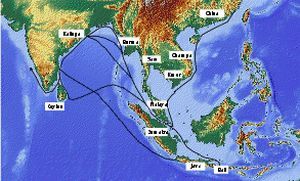 Map 1. Ancient maritime trade route from Odisha to South India, Sri lanka and East Asia, including Bali. |
(NEW DELHI, India) - In Part-2 of my story I present the history, culture, land use and livelihoods of affected people in Balitutha, Dhenkia, Gobindpur and Nuagaon villages and establish that the acts of Odisha Government and POSCO are illegal. (POSCO... a can of rotting bankster-worms [Part 1] )Shankara, Dr Iyer and I left Bhuvaneshwar on the morning of 7th November, 2011 and entered the anti-POSCO battle zone around 11AM. Dhenkia is closest to the coast flanking the Jattadhari Muhano [estuary] where POSCO wants to build the port and Bali Jatra is the most important festival of Odisha folks.
I named Balitutha village first; Nuagaon is about 3 kilometers from here. Shankara told me that some families from here went to the Bali Island and therefore the village is called Balitutha. ‘Bali-Yatra’- [1] literally means “travelling to Bali”- is a major festival of Odisha held on Karthik Purnima. [2]
Beginning Karthik Purnima, favorable winds helped ships sail from Odisha ports southward to Sri Lanka, Burma, Malaysia, Sumatra, Java, Bali, up north to Cambodia, Vietnam and China.[3] [Map 1]
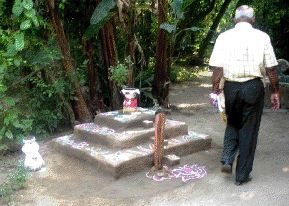 Image 1 Forecourt of each house is decorated |
The mighty Kalinga Empire stretched across the eastern seaboard of India 2500 years ago. Merchants, soldiers and sailors risked their lives, sailed to far away Asian lands. It took forty days to reach Bali which was a staging point for further travels to China and as history says they established excellent relationship with local communities. Annexed into the Magadha Empire by Emperor Ashok in 269 BC, these people maintained their trade links and remained a dominant maritime society right up to 1800 AD when they lost out to the British, Portuguese and Dutch traders.
The descendants of a great maritime community live in these parts. Their impoverishment starts with the British annexation of their lands and natural resources.
Today the situation in Balitutha village is such that a young woman of this proud race was shot and brutalized by a local policeman who told her to ‘get out of the village.’ [4] The shameful acts of senior civilian officers, the Police and the Judiciary for a Korean company are beyond comprehension.
There was no crony-capitalism twenty-five centuries ago and leaders did not gift people’s land over a cup of coffee as happens now; crony capitalism is the unique gift of western ‘democratic polity’ which in actual fact is globalized fascism.
 |
Life in the villages today
This is a sandy area close to the sea, but with plenty of underground sweet water. No doubt betel leaf is the mainstay of the local economy but the household income is supplemented with 32 other minor forest produce including betel nut and Kewra.[5]
Price-wise most valuable is cashew nut; sustainability-wise betel vine, minor forest produce and fish. The natural vegetation provides plenty of free food.
 Image 2 Betel leaves, also known as the |
However, betel leaf is probably the only cash crop where the farmers fix the price; they set the price, traders take it. Dhenkia farmers don’t use chemicals; their leaves have longer shelf life, better taste and fetch premium price. In fact researchers say that betel leaf cultivation –veritable Green Gold-is an excellent crop for small and marginal farmers. Leaves mature between 15 to 30 days and can be continuously harvested which ensures weekly cash flow for 10-30 years or longer after the initial investment. [See image 3] Known as poor farmers’ cash point, good quality leaves are in huge demand in India. [6]
Giridhari Sahoo says that the cost of cultivating his 1.5 acre plot is about Rs. 50,000; income from sale of betel leaves is about Rs. 200,000 leaving him with a net profit of Rs 150,000; other farmers agree. He supports twelve family members: his elderly parents, brother and his wife, and six children, three each to the two brothers. Properly managed, a low cost ‘green house’ betel vineyard generates at least half a million rupees per hectare, as the Indian Council of Agriculture Research confirms, and that tallies with Giridhar Sahoo’s estimates. In fact we met many small farmers with as small as 1/100th of a hectare [or one decimal] of land and they said that they were doing quite well. ‘Quite well’ means they can send their children to school, eat well, sleep well, and enjoy the simple things in life in their social environment. Nearly every household is engaged in betel leaf farming.
Disrupting a peaceful community
Recall that POSCO signed a Memorandum of Understanding [MoU] in June 2005 which’s now expired; this is the seventh year of opposition to POSCO’s proposed project. According to Abhay Sahu, Prashant Paikray, Sandeep and other local leaders
- More than 4000 families will be hit by POSCO project. Conservatively about 22,000 men, women and children will be dispossessed of their lands, homes, hearths and livelihoods.
- Settled habitations will be uprooted and thousands of betel-vine dependent livelihoods will be destroyed especially of landless workers, buying agents and small traders who profit from the trade.
- The proposed steel mill and port will adversely affect 11 villages and habitations in three Gram Panchayats [Village Councils]- Dhinkia, Nuagaon and Gadakujang- in Jagatsinghpur district.
- The integrated project will draw 12 to 15 billion liters of water from Mahanadi barrage at Jobra and Naraj that, according to local water resource experts, will affect the supply of drinking and irrigation waters in four districts.
- POSCO and the Government of India falsely claim that 48,000 jobs will be created. The truth is that POSCO employs 29,000 folks worldwide to produce about 13 million tonnes of crude steel. So who is fibbing? And jobs for whom? Our estimate is that not more than 12-15,000 jobs will be created against direct loss of about 50,000 jobs and that is more than the sum of employment they have created worldwide.
- The steel mill, township and port will block the natural drainage of Jatadhari river in ecologically fragile Mahanadi Delta region which irrigates thousands of acres of rice fields.
 |
Procedural violations by POSCO
POSCO fraudulently claims that it conducted the mandatory Environment Impact Assessment [EIA] at Kujanga but local officials say that no survey was carried out.[7] Project proponents are required to present EIA report, Environment Management Plan [EMP] and Disaster Management Plan [DMP] to the public in local language, conduct mandatory public hearing in each village affected by the project and discuss with the people their plans to mitigate adverse impacts. POSCO conducted the public hearing under Police escort and was essentially a farce. Our information is that the majority boycotted the public hearing although one Korean was seen.
It stands to reason that when a company is planning to invest 10-12 billion dollars, it should have first secured prospecting lease for the mines, invested in detailed survey, EIA, EMP and DMP before submitting a proposal for setting up steel mill, port and township. If there is no access to ore, there can’t be a project. Since the mining grant is already under review in the Supreme Court, there is no guarantee that POSCO will get the mines. The court battle will be fought intensely by Odisha Government at taxpayers’ expenses to save its reputation as a trustworthy minion of the globalist banksters. I said in Part 1 that the PORT IS THE KEY; the banksters want the port. [8] Once the area is cleared of the habitations, POSCO will plan for the steel project.
Legal violations by Odisha state
The Odisha Government notified that (a) 4004 acres of land will be acquired for POSCO project of which 11% is private [438 acres] and 89% Government [3566 acres] land and (b) 471 households will be displaced. We could not meet the revenue officer who maintains the land records but independent reports and discussions reveal that proper survey was not done. If the survey was not done then no one can be sure of the amount of land that would be sequestered; it can be 5000 acres or more. [9]
The provisions of the 73rd Amendment of the Indian Constitution lays down that Gram Sabha [the people of any village] are the only permanent political body, all other bodies are elected for a fixed tenure and hence the Gram Sabha is the highest Constitutional body in the country. Without the express approval of the Gram Sabha NO PROJECT CAN BE ALLOWED BY STATE OR THE CENTRAL GOVERNMENT and the Gram Sabhas had rejected this project. In blatant violation of the provisions of Panchayati Raj Act, the state government rejected Gram Sabha resolution and even declared the election of Shirish Mahapatra null and void!! [10]
In Part 1 of my essay, I said that POSCO had applied for a mining lease. There were 120 other competitors. The Odisha Government granted the mining lease without following the established legal procedure of competitive bidding for exploiting a scarce resource. One competitor filed a suit in the Odisha High Court and got the Government decision declared ultra vires [illegal]. Instead of POSCO contesting the decision, the Odisha Government filed a review petition in the Supreme Court. I had also stated that the MoU had expired yet the Odisha Government was indulging in nefarious and criminal acts of arresting peaceful people opposed to the project. Since mining lease has not been granted, and the Supreme Court has yet to give its decision on the review petition, the raison d’être for the project does not exist.
Assuming that the project is vital in national interest, which it is not, it raises vital questions:
(a) Where is the MOU and project related documents?
(b) The people of India want to know how much land will be acquired for each of the project components: the mines, the railway track to be laid from the mines to the port, the steel mill, the port and the exclusive township for Korean and Indian managers.
(c) Where are EIA, EMP and DMP in respect of POSCO’s mining project, railroad, steel mill, port and the township? Fifteen documents are required, three for each component. These documents are required to be uploaded on the website of the Ministry of Environment and Forestry [MoEF] by law and these documents are not there. The most scandalous decision of former Minister of MoEF Jairam Ramesh was to give ‘conditional approval’ to POSCO project. Did he bother to go into the merit of the project?
(d) The people of these villages and of nearby four districts and of India want to know how much water will be diverted for this project; how many trees will be felled; how many endangered species-like the Olive Ridley turtles would face extinction? And where will the displaced 20,000 fishermen be resettled and rehabilitated?
(e) The Odisha Government claims that there are no forest dwellers. [11] The so-called Government land is recorded as uninhabited forest lands. It’s well known in these parts that farmers have been living in the forested area and many households are forest dwellers. Majority of betel vines are located in the sandy soils of the forested area but have been under cultivation for at least four generations but the land records were never updated and that is nothing new. [12] However, the Government arbitrarily debarred forest dwellers opposing POSCO project from filing their claims under Forest Rights Act of 2006. Even a pro-government member of the special committee of MoEF to investigate POSCO project agreed that this is ‘a violation of natural justice.’ [13]
Despite all this, the Odisha Government wants local citizens ‘out of the villages’? Why have they arrested Abhay Sahu and slapped false charges against hundreds of innocent citizens in the proposed POSCO project area? Why have they garrisoned the villages, cordoned off habitations, where people can’t perform normal activities and children can’t go to schools?
Recent judgments of the Supreme Court
The Odisha Government should read two vital Supreme Court decisions:
(a) CIVIL APPEAL NO.1132 /2011 @ SLP(C) No.3109/2011, dated January 2011, arising out of Special Leave Petition (Civil) CC No. 19869 of 2010), and
(b) WRIT PETITION (CIVIL) NO. 423 OF 2010 with WRIT PETITION (CIVIL) NO. 10 OF 2011 in the infamous spectrum allocation scam dated 2012
In the first case the court held that ‘People with power and pelf operating in villages all over India systematically encroached upon communal lands and put them to uses totally inconsistent with its original character…. was done with active connivance of the State authorities and local powerful vested interests and goondas [anti-social elements]. Instead of ordering the eviction of these unauthorized occupants……the [officials] colluded in regularizing this illegality’ and …. [therefore] such kind of blatant illegalities must not be condoned….. [illegal] possession of the land in question must be handed back to the Gram Panchayat [Village Council]….. regularizing such illegalities must not be permitted because it is Gram Sabha land which must be kept for the common use of villagers of the village’…..’The time has now come to review all these orders by which the common village land has been grabbed by such fraudulent practices.’ If at all illegal occupation of village commons is to be allowed it should be for the benefit of the weaker sections or for a school, dispensary or other public utility on the land and not for politically well connected individuals. Thus, the Court has clearly laid down that village commons can’t be expropriated for private benefits.
In the second case, the Supreme Court has defined ‘natural resource’ and clarified the role of the State. It raised a fundamental question: ‘Whether the Government has the right to alienate, transfer or distribute natural resources/national assets otherwise than by following a fair and transparent method consistent with the fundamentals of the equality clause enshrined in the Constitution?’ [Pages 1 and 2 of the judgment] The detailed clarification, citing past judgments of various courts in similar matters and the Constitutional provisions are given in pages 68 to 75 and the main points are: “It must be noted that the constitutional mandate is that the natural resources belong to the people of this country…It is thus the duty of the Government to provide complete protection to the natural resources as a trustee of the people at large…. the solemn duty of the State to protect the national interest and natural resources must always be used in the interest of the country and not private interests…….. the State and/or its agencies/instrumentalities cannot give largesse to any person according to the sweet will and whims of the political entities and/or officers of the State…..Appearance of public justice is as important as doing justice. Nothing should be done which gives an appearance of bias, jobbery or nepotism.”[sic]
The Odisha Government has committed ten illegal acts:
- Violated the provisions of the 73rd Amendment which gives primacy to Gram Sabha
- Arbitrarily allotted mining lease to an alien company known for its illegal acts worldwide
- Forcibly sequestering lands of the people for a company whose major shareholders are known financial fraudsters in the US and the European Union
- Violated the norms and procedures laid down under the Environment Protection Act
- Forcibly occupied village commons and destroyed common pool resources
- Forcibly evicted people from their homes and hearth
- Disturbed the peaceful lives and settled livelihoods of the local communities
- Arrested citizens who opposed the Government’s illegal acts
- Violated Human Rights of the villagers by destroying their property, farmland and homes
- Violated the provisions of Forest Rights Act because many households are forest dwellerss
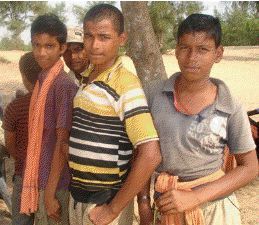 Image 3: Young village kids, barely 12 or 13 |
Will POSCO be held guilty?
NO! Since MoU has expired, technically they have no legal undertaking with the Government of Odisha and they have not even filed a review petition in the Supreme Court. That is the red herring, the great deception of the banksters. And they are using POSCO as their Trojan horse.
So, what options people have?
Over 35,000 Korean immigrants illegally live in Delhi. They sell Korean food including Soju [a hard alcoholic drink], dog meat and run travel agency and eateries illegally. These economic refugees, live here at a sixth of the Korean cost, in homes they can’t afford back home, are known to be the most abusive employers of domestic workers.
The dominant corporate culture of banksters’ Korean prostitutes may be to treat Indians as dregs but in Dhenkia the situation will be different. The Koreans must have seen that most people here are tall, well built, and strong; one slap across the face from an eighteen year old will move the Korean lower jaw westward. When the Korean managers or their Indian acolytes start living in their planned township they will have to move with armed escort. [14] Five hundred rupee bribe for visa in Delhi will not guarantee them a safe journey to the nearest grocer in Dhenkia because the ancestors of these people traversed the oceans without police escort and they did not need visa.
 |
POSCO managers have been blinded by false promises of rogue banksters and rogue Indian politicians and bureaucrats who’d sell their mothers for a seat for their children in Harvard.
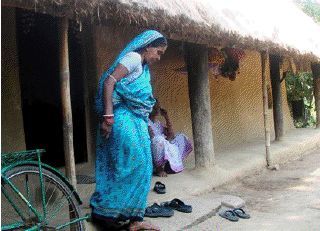 |
Mining industries do not have local value linkages and ports have been used to export vital natural resources ever since Asian countries came under Anglo-American colonial control. The Koreans should introspect and review the events of 1996 when their vital national assets were taken over by the Anglo-American banksters. Secondly, there is a need to realize that trade and commerce with the western countries in exchange for toilet paper dollars is a double whammy: Asians sell hard goods and scarce resources against toilet paper dollars. Deposited in the banks owned by a bunch of rogues, Asians can never convert that dollar holding to anything of substance like gold or silver. China learned that lesson when the US Government refused to allow the takeover of a US oil company and access to strategic US assets was denied. Hence, Asians must realize that trade relations with the west will remain on unequal terms so long as this region accepts dollar hegemony. Thirdly, all western corporations, no matter how much their mainstream media scoundrels shout, are reaping unimaginable benefits from an unjust terms of trade: Asia is lowering wages and quality of life to supply goods and services to the people of Europe and North America but the cost advantage is never passed on to the western consumers; all excess profit is expropriated by the corporations who are directly or indirectly controlled by the banksters, a system in which both the Asian workers and Western consumers are losers. And finally, Asians have a long history of trade, tolerance, and cultural exchange; interaction with the West is barely two centuries old. There is, therefore, a need to review Asia’s trade, financial, industrial and cultural relationship with the West. Asians have nothing to lose and nothing to fear yet the Asian leadership has genuflected to those global criminals. Business as usual can’t go on.
"Circus dogs jump when the trainer cracks the whip. But the really well-trained dog is the one that turns somersaults when there is no whip" - George Orwell
Footnotes:
[1] In 1992, the Government of Odisha organized a function to commemorate their ancestors’ maritime heritage and sent a yacht following the traditional route. See also http://en.wikipedia.org/wiki/
[2] http://en.wikipedia.org/wiki/
[3] http://en.wikipedia.org/wiki/
[4] Video Posted by Radical Notes May 17, 2010 at 10:27 am in India, Orissa, State Repression, Video
http://radicalnotes.com/
[5] Kewra water is an extract of Pandanus flowers; it is a natural flavoring agent, especially used in non-veg Mughal cuisine in South Asia.
[6] Guha, P; Betel Leaf: The Neglected Green Gold of India; J. Hum. Ecol., 19(2): 87-93; 2006. According to Guha, the Green Gold is the most neglected crop in India. He says, betel vines “grows best under the shaded, tropical forest ecological conditions with a rainfall of about 2250-4750 mm, relative humidity and temperature ranging from 40-80% and 15-40°C, respectively, on well-drained fertile sandy or sandy loam or sandy clay soil, ideal in these parts. Betel vine farming/trading is important for another strategic reason also. It may be the only crop where the farmers still play a role in determining the cost of the end product.” That is because of its cultural and religious value.
[7] Under Environment Protection Act, EIA notification of 2006, major projects are required to conduct proper survey and prepare these three documents as a basis for decision to proceed or not.
[8] The port has always been the key in colonization of Asia. POSCO has sought SEZ status for its port in Dhenkia. It means that Indian laws will not be applicable within the SEZ. The owner of the port POSCO will not be answerable to Indian authorities for any violation. They can go on stealing as many resources as they wish and no one will stop them. They will pay no taxes because SEZs are tax free zones.
[9] That is how lands have been acquired since 1947. The Heavy Engineering Corporation required 800 acres; the management acquired 8,000 acres and displaced 1157 households south of Ranchi. Majority of land owners received Rs 27 per acre as compensation in 1957-59 and were pauperized over the years. One lady who once owned 150 acre of prime agricultural land was begging in the streets of Ranchi in 1995 when I went there to document the case; her husband became insane and died and two sons were shot dead in fake encounters by the Police.
[10] Various resolutions of the Palli Sabha under direction of Shirish Mahapatra during 2011
[11] Tehsildar of Kujang Tehsil. The Tehsildar is the lowest revenue officer in India. They maintain land records, records of property transfer, and collect revenue. The details of the discussions with Tehsildar was reported in REPORT BY THE INDEPENDENT FACT FINDING TEAM ON ISSUES RELATED TO THE PROPOSED POSCO PROJECT IN JAGATSINGHPUR (ORISSA); 19th to 22nd April 2007. According to a recent report one contestant in local authority election has claimed she is a forest dweller and she is contesting, which means that there are forest dwellers in the so-called ‘uninhabited forests.’
[12] Some states claim that they have completed the revision of revenue records, or record of ownership of land. The fact is that after the Revisional Survey conducted between 1927 and 1933, most land records remain incomplete in rural areas. Forested areas have become inhabited, inhabited areas have become part of urban agglomeration, flood plains have been given away to builders, illegal mines operate all over India, and water resources have been expropriated and filled up for illegal construction.
[13] Report of the Committee Constituted to Investigate into the proposal submitted by POSCO India Pvt. Limited for establishment of an Integrated Steel Plant and Captive Port in Jagatsinghpur District, Orissa; MoEF; October 18, 2010
[14] In 1981, the managers of a leading Indian company, which had set up a factory on lands forcibly acquired by the government, were caught at a railway crossing and soundly beaten up by local villagers. The managers had to leave the area.
POSCO... a can of rotting bankster-worms [Part 1]
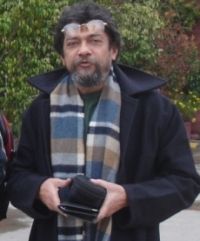 Arun Shrivastava is Salem-News.com's South Asia Correspondent. An accredited management consultant, Arun is also a highly experienced researcher and writer. He studied in India and England and returned to India in 1989, after a brief stint as senior officer with Economic Development Unit of Birmingham (UK). From 1989 to 1994, he taught Strategic Management and Long Range Planning to MBA students at International Management Institute in Delhi.
Arun Shrivastava is Salem-News.com's South Asia Correspondent. An accredited management consultant, Arun is also a highly experienced researcher and writer. He studied in India and England and returned to India in 1989, after a brief stint as senior officer with Economic Development Unit of Birmingham (UK). From 1989 to 1994, he taught Strategic Management and Long Range Planning to MBA students at International Management Institute in Delhi.
About twenty years ago he founded two institutions, one for consulting and another for doing sponsored research work; today both are known for excellence. Since the events of 9/11, he has devoted much of his time to researching NWO issues. Arun also moderates International Human Rights Organizations’ discussion group.
Salem-News.com is very pleased that Arun Shrivastava chose to join our dynamic team which has been paying increasing attention to problems taking place in India. He is Salem-News.com's 94th writer and his presence allows us to better cover important events in an increasingly interconnected world community.
You can send an email to Arun Shrivastava at this address: arunshrivastava.1951@gmail.com
 |
Articles for February 15, 2012 | Articles for February 16, 2012 | Articles for February 17, 2012






Terms of Service | Privacy Policy
All comments and messages are approved by people and self promotional links or unacceptable comments are denied.
[Return to Top]
©2025 Salem-News.com. All opinions expressed in this article are those of the author and do not necessarily reflect those of Salem-News.com.